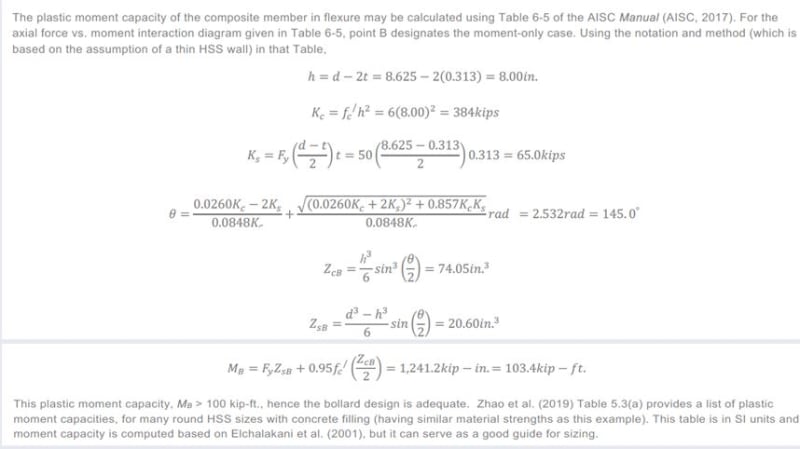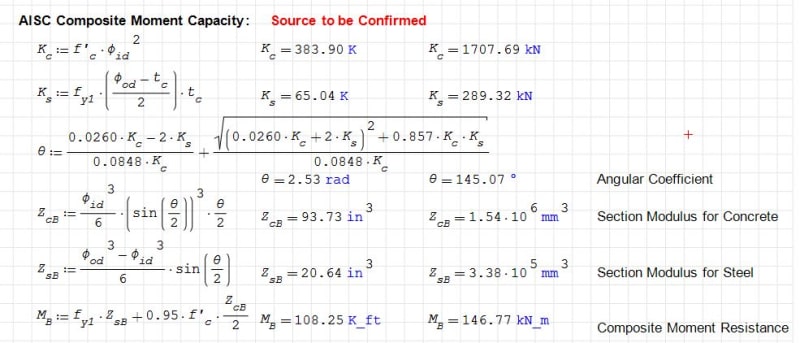I looked to the article published by STI , ( and prepared by By J. A. Packer )... I am familiar with EUROCODES and looked again the Eurocode 1 Part 1.7.. Apparently , the article has been prepared with a HYBRID approach ( Loads from EC, Plastic design of HSS Bollard with AISC....) Probably the mass of vehicles (Zhao et al ??? 2019) from web search..
My gut feel is something wrong with this calculation and MotorCity (Structural) has a valid point (and a big PS for that)..
My arguments are.
- The subject formula ( F = v √km ) is at Annex C Dynamic design for impact (which is Informative , not normative )
- Table 4.1 Indicative equivalent static design forces due to vehicular impact of the code ( Normative ) proposes for Courtyards and parking garages with access to: for cars Fdx= 50 kN Fdy = 25kN
- Table 4.2. Indicative equivalent static design forces due to impact on superstructures for Courtyards and parking garages 75 kN
- 4.4. Accidental actions caused by forklift trucks , F = 5W ( if we assume 4 tons ) F= 5*4= 20 tons and say 200 kN still less than 270 kN.
- The proposed vehicle mass ( large SUV ) is WEIGHT of the vehicle .. The mass would be m= W/g = 300 kg mass ( assume g=10.0 m/sec^2
- In this case the force would be F= 9 * SQRT (300,000*300) = 85000 N= 85 kN ( say 20 kips)
If we look the dimensional analysis of the formula ;
F = v √km We should use the ( F,L, T ) dimensions .. V= L/T , k= F/L m= ( F* T^2/L)
In this case ( assume the letters in parenthesis F= ( L/T) *SQRT *((F/L)*( F* T^2/L) so, F= F and mass in the formula will be kg-mass ( not kg- force )
P.S. If you get the info . free of charge from web, i always consider that , WORLD WILD WEB .. (Say , my thoughts..) and I will suggest to get a copy of Eurocode 1 — Actions on structures —Part 1-7: General actions — Accidental actions together with National Annex ( NA+A1:2014 to BS EN 1991-1-7:2006+A1:2014 )


